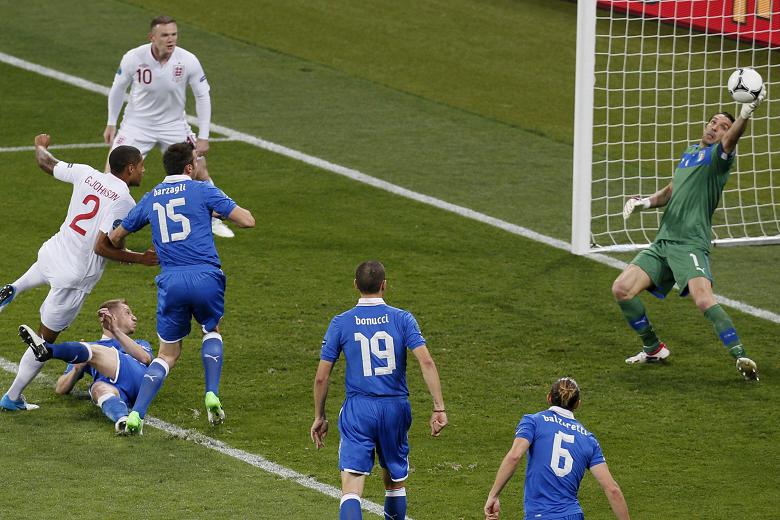Soccer Goalkeeper Rules in the Game

Soccer Goalkeeper Rules Are a Little Different Than Soccer Rules for Outfield Players.
Soccer Goalkeeper Rules are there to keep the game fast paced and more entertaining.
Goalkeepers are the last line of defense for goal, and they are allowed to use any part of their body to stop the ball from crossing inside the goal line.
Rules of soccer state that the whole circumference of the soccer ball has to cross the goal line for the goal to count.
Goalies are allowed to use ANY part of their body, including their hands.
Once the Goalkeeper leaves the penalty box, he is considered another outfield player and the use of hands is prohibited.
Goalkeeper can drop the ball to his feet, after which the ball is in play, and the goalie cannot pick it back up using hands. He becomes another outfield player.
Goalkeeper cannot pick the ball up with hands anytime the ball is passed back to the goalie, by a teammate, or if the ball is received from a throw-in.
Picking the ball up on a pass back or throw-in will cause the referee to call an Indirect Free Kick against the Goalie.
Goalkeeper is ALLOWED to pick the ball up with his hands only if the ball is passed back using head or chest.
Soccer goalie rules, enforced by the referee, protect the goalkeeper above every player when the ball gets inside their penalty box, and even more inside the 6 yard box.
Although goalkeepers are protected by the referee, one foul by the goalie leads to a penalty kick, with a possible yellow or red card, depending on the offense.
Goalkeepers are great athletes who spend hours upon hours developing their cat like reflexes.
They will make incredible saves during the game and can be crucial for the teams performance.
Some tips for any aspiring young soccer goalkeeper, is not to be afraid of the ball, learn how to use feet to distribute the ball and prepare for lots of hard work.
Everything else comes with training and years of consistent practice.
If you train like a pro, you have a chance of becoming a pro :)
Soccer Goalkeeper Rules Simplified
- Using any part of the body, including hands, is ALLOWED to stop the ball from crossing inside the goal line.
- Once the keeper drops the ball on the ground, he cannot pick it back up using his hands.
- Goalkeeper is NOT ALLOWED to pick the ball up, after its passed back by a teammate or received from a throw-in.
- Goalkeeper is ALLOWED to pick the ball up, after its passed back by a teammate using his chest or head.
- Once the Keeper leaves the 16 yard box (Penalty Box), he is considered just another outfield player.
- For Goalkeeper Tips please visit World Soccer - Five Goalkeeper Tips.
Important Soccer Rules Explained
- Soccer Rules and Regulations - The 17 Rules of Soccer.
- Soccer Fouls - The 12th Law of the Game.
- Offside in Soccer - The 11th Law of the Game.
- Player Positions - Goalkeeper, Defenders, Midfield, and Forwards.
- Indoor Soccer Rules and Regulations - Study rules that govern the indoor soccer game.
- Soccer Goalkeeper Rules - Goalkeeper rules for playing the game.
- Soccer Penalty Kicks - The 14th Law of the Game.
- Soccer Referee Signals - Learn different referee signals used by referees to communicate rule infractions.
- Soccer Advantage Rule - Advantage in soccer is used to get ahead in the game.
- Dimensions of a Soccer Field - Official soccer field dimensions in USA, and Metric, system.